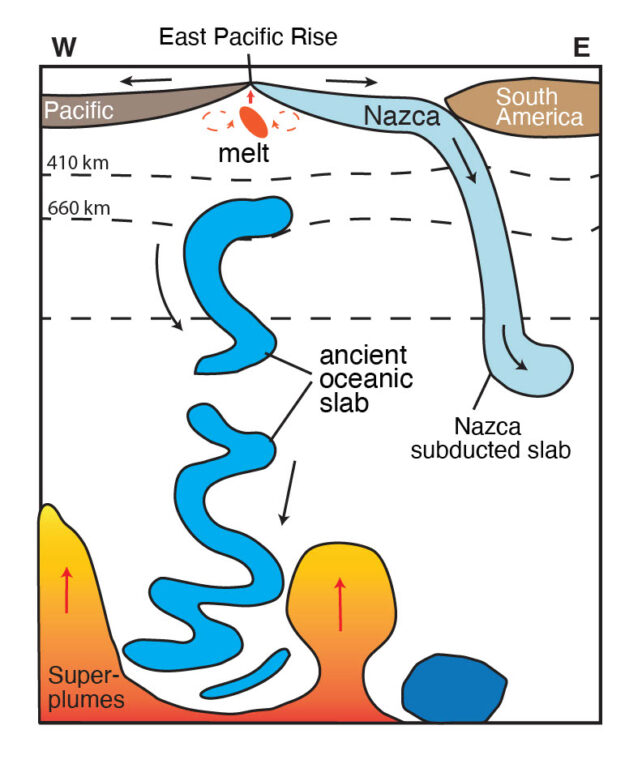Scientists have now identified a strange patch of Earth deep beneath the Pacific Ocean that could explain why this region is currently creating the fastest-growing ocean ridge in the world: the East Pacific Rise.
Using seismic data, geologist Jingchuan Wang and colleagues from the University of Maryland have found ancient ocean plates hidden deep in the Earth’s interior that could contribute to the spread, dating back to the time of the dinosaurs.
“Our discovery raises new questions about how the deep Earth influences what we see on the surface over large distances and timescales,” says Wang.
By sending bouncing sound waves deep into the ground to form seismic maps, Wang and his team identified a strange blob of mantle moving surprisingly slowly beneath the Nazca Plate that borders South America’s continental plate.
Most of Earth’s volume consists of heated silicate rocks, sandwiched between a cool, thin outer crust and a scorching hot core. This partially molten layer of minerals, also called the mantle, flows in cycles over a very slow course of tens of millions of years due to the extreme temperature differences above and below. Denser, cooler material is drawn into the warmer interior in a process called subduction.
In this area, the Nazca Plate is currently subducting beneath South America, as shown in the diagram below. But on the western side of the plate is the fast-growing ocean ridge and a hotspot of geological activity beneath the Easter Islands and a mysterious structural divide between the central and eastern Pacific Oceans.

“We found that the material in this region was sinking at about half the rate we expected, suggesting that the mantle transition zone may act as a barrier and slow the movement of material through the Earth,” Wang explains out.
The team found that this plate structure is colder and denser than surrounding areas and appears to be a fossilized piece of an ancient seafloor.
“This thickened area resembles a fossilized fingerprint of an ancient piece of seabed that fell into the Earth about 250 million years ago,” Wang describes. “It gives us a glimpse into Earth’s past that we’ve never had before.”
By not melting as completely as the surrounding mantle, the remnants of what was once a Triassic ocean floor protrude deeper into the hotter mantle layers, causing the material to bulge into structures called superplumes.
The Easter hotspot is believed to be above one of these plumes.
“Geodynamic simulations have attributed the geometry and stability of the lower mantle structures to their direct interactions with subducting plates,” the team writes in their paper.
The researchers suspect that this series of anomalies, which move from east to west, could help tell the story of the Nazca Plate and how it has moved through Earth’s history.
By deciphering historical traces of these ancient impacts deep in the ground, geologists can learn more about how the inner workings of our planet shape the surface of our current world.
“Seeing the ancient subduction plate from this perspective gave us new insights into the relationship between very deep Earth structures and surface geology, which were not clear before,” Wang explains.
This research was published in Scientific progress.



